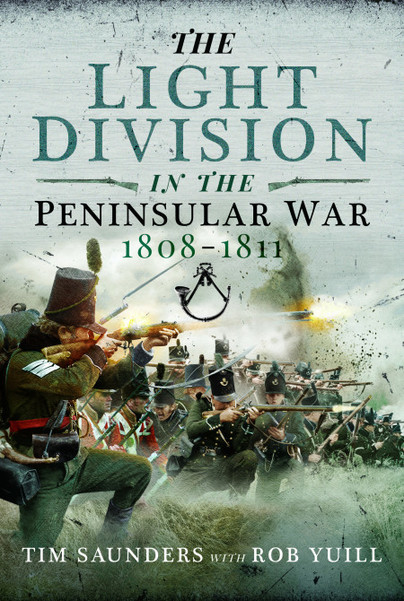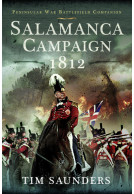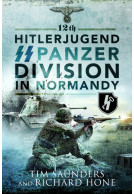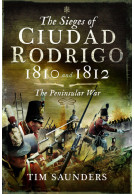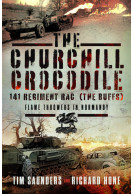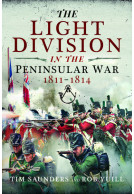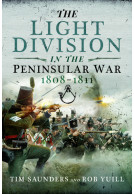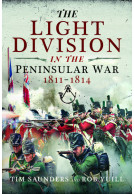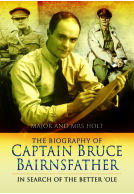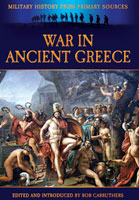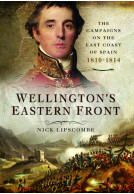The Light Division in the Peninsular War, 1808–1811 (eBook)
Imprint: Pen & Sword Military
Series: Peninsular War Battlefield Companion
File Size: 160.2 MB (.epub)
Pages: 312
Illustrations: 30 black and white illustrations & 15 black and white maps
ISBN: 9781526757333
Published: 16th April 2020
| Other formats available | Price |
|---|---|
| The Light Division in the Peninsular… Paperback Add to Basket | £13.59 |
| The Light Division in the Peninsular… Hardback Add to Basket | £25.00 |
Histories of the Light Division have tended to be incomplete, being based on memoirs of a few well known diarists, principally from the 95th Rifles. The authors of this book, the first volume of two, have sought memoirs from across the division, including the artillery, the King’s German Hussars and others to complete a broader history of Wellington’s elite division.
Light infantry was not new a concept in 1803, but at Shorncliffe Camp Sir John Moore developed a progressive ethos, set of tactics and training for the newly converted light infantry regiments. With the 95th Rifles they were melded into a brigade that was to form the basis of the incomparable Light Division.
From the outset of the Peninsular campaigns in 1808 they delivered results way beyond their scant numbers, but it was during the epic winter retreat to La Corunna that they showed their metal. Returning to the Peninsular months later, the irascible Brigadier Craufurd led the Light Brigade in terrible march to reach Wellington at Talavera; heavily laden and in the heat of summer.
Over the winter of 1809/10, Craufurd,s battalions, now elevated to the status of a division, provided the army’s outposts. This was work that Craufurd excelled in and actions abounded, including the Combat on the Côa, where the division fought hard to escape Marshal Ney’s trap.
In 1810, with Wellington withdrawing to the Lines of Torres Vedra, the Light Division played a significant part in the battle of Buçaco Ridge, while the following year they drove Marshal Masséna’s army back into Spain having fought almost daily actions en route.
This history of the Light Division is not simply a series of set piece battles but provides a wider picture of campaigning and what it was to be a light infantry soldier.
The first volume of two is fantastic and even for those like me who have read several volumes on the 95th Rifles, the Light Division and the Peninsular War, it is a must to buy and read. The bonus are the photos of the places, the maps and a fantastic choice of prints from the time and of today (by the talented Christa Hook).
On The Old Barbed Wire
Read the full Italian review here
The passion the authors, both former Riflemen, have for their subject is clear and their eye for the ground which they have clearly walked extensively is obvious in their outstanding battle narratives. They have succeeded in masterfully weaving together the contribution made to the war in the Peninsula by the various constituent regiments of what, from 1810, became known as the Light Division. As such they include not only the relatively well known activities of the 95th Rifles and of the 43rd and 52nd Light Infantry but also the artillery, cavalry and, notably, the Portuguese units which served as a part of the Division. Beginning with a very clear summary of the origins of the light infantry and the formation of the Rifle Corps in 1800, largely influenced by Major General Sir John Moore, the authors then march step by bloody step, chronologically through every one of the Light Division’s many skirmishes and major battles. What emerges is a clear picture of the toughness, resilience and tactical skill of the riflemen fighting against a tenacious, and often numerically superior enemy, over rugged terrain and in weather which frequently scorched, saturated or froze them. Because, one way or another, the units of the Light Division took part in most of the major engagements in the Peninsula Campaign these two volumes provide a concise and easily digestible history of the War. They are a model of clarity and conciseness and are most highly recommended to the general reader and Peninsula War specialist.
Military Historical Society
A curious and interesting book for those who love naval history of all time and who like stories based on real facts.
Miniaturas JM
Read the full Spanish review here
As featured by
Friends of Cumbria's Museum of Military Life newsletter
A good read, even those familiar with the period and the Peninsular War will likely find this useful.
The NYMAS Review
The authors deliver solid combat narratives with primary sources incorporated skilfully, particularly the reminiscences of Rifleman Harris of the 95th. They add box-out text sections, covering extraneous information such as weapons, equipment, and uniforms. Reenactor photographs showing loading and basic tactics, including the famous Plunkett Position, and clear maps and modern photographs of terrain illuminate the narrative. Napoleonic wars enthusiasts will enjoy this book very much.
Beating Tsundoku
Read the full review here
A new book from leading historians in their field. The authors are also former soldiers and battlefield guides. The popular perception of the Light Division has been created by the excellent series of novels following the career of Sharpe of the 95th Rifles. This book provides a full and accurate picture of the Division. – Most Highly Recommended
Firetrench
Read the full review here
This work is recommended for the non-specialist reader who will enjoy the extracts from a variety of diaries, and I am sure for the specialist, there will be new discoveries and interpretation. Read this and look forward to the second volume!
Robert Bartlett
The Division didn’t just contain the famous 95th Rifles. This book makes a determined attempt to include sources from the other units in the division, including the cavalry, and covers the activities of their Portuguese forces as well (although with limited sources available for this period). Although the events covered are often very familiar, this means that we do get a different view of most of them, and a better idea of the full range of the Light Division’s activities.
History of War
Read the full review here
It does a very good job telling the story of the multitude of small actions and the sometimes repetitive experience of the light troops, infantry cavalry and gunners, that screened the British Armies in the Peninsular.
Army Rumour Service (ARRSE)
Read the full review here
Our opinion of this book is best summed up by imploring the authors, Tim Saunders and Bob Yuill, to let us have volume two as soon as possible. This book about the Light Division is well focused and doesn’t drift off into writing about the wider campaign more than is necessary to tell the Division’s story. Of particular interest are the many insights into the lives of the officers and ordinary infantry soldiers between the battles. The story flows easily along the timeline from the Division’s inception to its fruition.
Clash of Steel
There are a large number of maps and photographs interspersed throughout the text. Many photographs are of the locations today which would be a big help to anyone visiting the battlefields and marching routes.
We highly recommend this book and look forward to volume two.
Read the full review here
As would be expected in any work involving Tim Saunders, this account of the Light Division between 1808-1811 is quite excellent and delivers both an overview and detail. It is supported by well curated maps and images, particularly those images that define the landscape so well. This volume is highly recommended and I am looking forward to its companion volume covering 1811-1814.
Michael McCarthy
Michael McCarthy. Battlefield Guide
About Tim Saunders
TIM SAUNDERS served as an infantry officer with the British Army for thirty years, during which time he took the opportunity to visit campaigns far and wide, from ancient to modern. Since leaving the Army he has become a full time military historian and has made nearly fifty full documentary films with Battlefield History and Pen & Sword. He is an active guide and accredited member of the Guild of Battlefield Guides.







